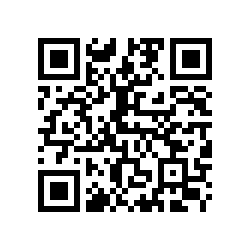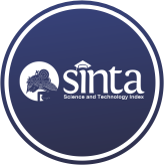Aplikasi Pembelajaran Bahasa Jepang Hiragana, Katakana dan Kanji Dasar
(1) Universitas Yapis Papua Jayapura, Indonesia
(2) Universitas Yapis Papua Jayapura, Indonesia
(3) Universitas Yapis Papua Jayapura, Indonesia
(4) STIMIKOM Stella Maris Sumba, Indonesia
(*) Corresponding Author
Abstract
Full Text:
PDFReferences
R. Komalasari, “Manfaat Teknologi Informasi Dan Komunikasi Di Masa Pandemi Covid 19,” Tematik, vol. 7, no. 1, hal. 38–50, 2020, doi: 10.38204/tematik.v7i1.369.
A. M. Wijaya, “Media Pembelajaran Digital Sebagai Sarana Belajar Mandiri Di Masa Pandemi Dalam Mata Pelajaran Sejarah,” J. Sandhyakala, vol. 2, hal. 1–10, 2021, [Daring]. Tersedia pada: https://jurnal.ikipjember.ac.id/index.php/sandhyakala/article/view/562/553
W. Jobe, “Native Apps Vs. Mobile Web Apps,” Int. J. Interact. Mob. Technol., vol. 7, no. 4, hal. 27, 2013, doi: 10.3991/ijim.v7i4.3226.
A. Amarapala, “Desktop Application Vs Mobile App Vs Web App,” World Class Software and Service, 2019. http://www.iomworld.com/desktop-application-vs-mobile-app-vs-web-app-2/
Badan Pusat Statistik, Statistik Telekomunikasi Indonesia, 2020 ed. Badan Pusat Statistik, 2020. [Daring]. Tersedia pada: https://www.bps.go.id/publication/2021/10/11/e03aca1e6ae93396ee660328/statistik-telekomunikasi-indonesia-2020.html
H. Zakiyyah, Belajar Bahasa Jepang Itu Mudah, 1 ed. Yogyakarta: B first, 2017.
The Japan Foundation, “Survey Report on Japanese-Language Education Abroad 2018,” 2018. Diakses: 4 November 2022. [Daring]. Tersedia pada: https://www.jpf.go.jp/j/project/japanese/survey/result/dl/survey2018/Report_text_e.pdf
DOI: https://doi.org/10.30645/kesatria.v4i1.128
DOI (PDF): https://doi.org/10.30645/kesatria.v4i1.128.g122
Refbacks
- There are currently no refbacks.
Published Papers Indexed/Abstracted By:














